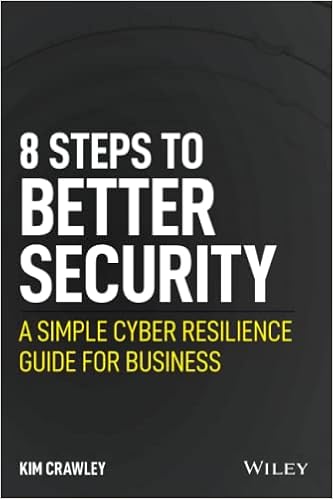
Cyber Resilience
RESILIA™ Cyber Resilience Best Practices
AXELOS’s new guide RESILIA™ Cyber Resilience Best Practices provides a methodology for detecting and recovering from cyber security incidents using the ITIL lifecycle
RESILIA™ Cyber Resilience Best Practices
Best guide on Cyber Resilience on the web – Cyber Resilience Best Practices
is part of the AXELOS RESILIA™ portfolio.
RESILIA™ Cyber Resilience Best Practices is aimed at anyone that is responsible for staff or processes that contribute to the cyber resilience of the organization.
The methodology outlined in this manual has been designed to complement existing policies and frameworks, helping create a benchmark for cyber resilience knowledge and skills.
- Designed to help organizations better prepare themselves to deal with the increasing range and complexity of cyber threats.
- Provides a management approach to assist organizations with their compliance needs, complementing new and existing policies and frameworks.
- Developed by experts in hands-on cyber resilience and systems management, working closely with subject and technology experts in cyber security assessment.
- Supports the best-practice training and certification that is available to help organizations educate their staff by providing a defined benchmark for cyber resilience knowledge and skills.
- Aligned with ITIL®, which is the most widely accepted service management framework. The best practice is equally suitable for organizations to adopt within other systems, such as COBIT® and organization-specific frameworks.
Target market
- Managers who are responsible for staff and processes where cyber resilience practices are required – for example those processing payment card information, sensitive commercial data or customer communications.
- IT service management teams, IT development and security teams, cyber teams and relevant team leaders that operate the information systems that the organization relies on.
- IT designers and architects, those responsible for the design of the information systems and the controls that provide resilience.
- The chief information security officer (CISO), the chief security officer (CSO), IT director, head of IT and IT managers.
Buy this guide and gain practical guidance on assessing, deploying and managing cyber resilience within business operations.RESILIA™ Cyber Resilience Best Practices
Tags: Chief Information Security Officer, CISO, Computer security, CSO, cyber crime, Cyber Defence, Cyber Insurance, Cyber protection, Cyber Resilience, cyber security, Cyber Security countermeasures, Cyber Security Safeguards, cyber threats, data security, Information Security, Information Technology Infrastructure Library, ISO, iso 27001, iso 27002

















